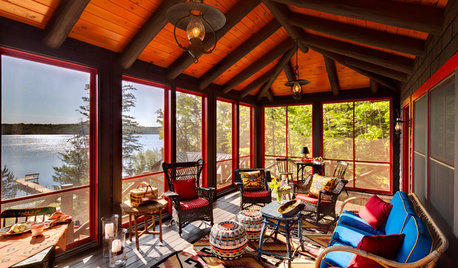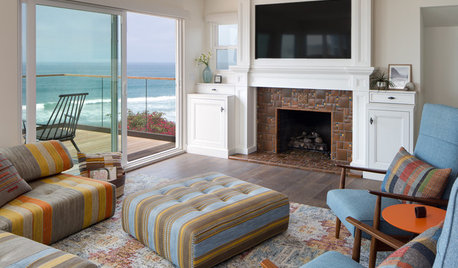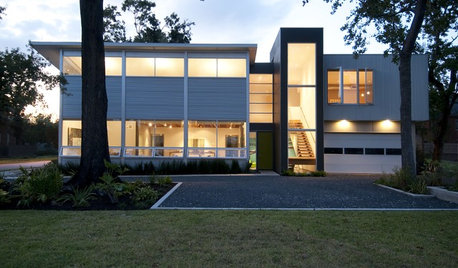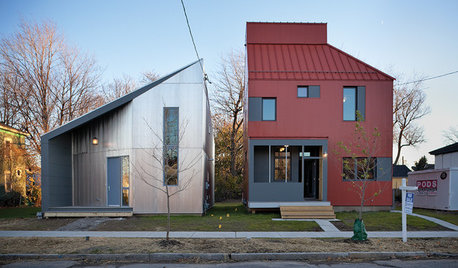Architects. Arkansas. $3,000
C O
5 years ago
Featured Answer
Sort by:Oldest
Comments (149)
Najeebah
5 years agobry911
5 years agolast modified: 5 years agoRelated Discussions
Looking for Designer in Little Rock Arkansas
Comments (5)Here's the site for the Arkansas Chapter of the American Society of Landscape Architects: http://www.arasla.org/component/option,com_frontpage/Itemid,1/ Click on "Our Chapter," then "Local Firms." There are several listed in the Little Rock area. Unfortunately, only one comes up if you limit the search to "Residential" specialty....See MoreDrafter-Architectural designer-architect-whats the difference
Comments (67)AlexHouse has made some uninformed and misleading statements about laws regarding Interior Designers based on quotes from other uninformed people like this one: "In Nevada, it's illegal to do interior design without a license. That's right, advising someone about drapes could land you in the hoosegow." The law in Nevada law simply allows a "REGISTERED INTERIOR DESIGNER" to perform code regulated interior design work that was previously restricted to Architects. The law in no way restricts anyone from calling themselves an "INTERIOR DESIGNER" or from providing interior design services as they have in the past. The Nevada law was in response to the protests of Nevada Interior Designers who wanted to be able to design the materials and structures of the interior of code regulated commercial buildings. The law has no effect on the interior design of 1 & 2 family homes or the work of those who continue to practice interior design as they have in the past. REFERENCE: "NRS 623.3601. - It is unlawful for any person to: (a) Hold himself or herself out to the public or to solicit business as a ... registered interior designer ... in this State without having a certificate of registration or temporary certificate issued by the Board. This paragraph does not prohibit a person who is exempt, pursuant to NRS 623.330, from the provisions of this chapter from holding himself or herself out to the public or soliciting business as an interior designer." "NRS 623.330 - 1. The following persons are exempt from the provisions of this chapter: (g) Any person who prepares drawings of the layout of materials or furnishings used in interior design or provides assistance in the selection of materials or furnishings used in interior design... if the preparation or implementation of those drawings or the installation of those materials or furnishings is not regulated by any building code or other law, ordinance, rule or regulation governing the alteration or construction of a structure."...See More$3,000 flower bed?!?
Comments (38)Edge the pool with a wide strip of concrete or stone paving (much of the existing paving is going to turn out to be too narrow) and put a wall in to provide an adequately sized, paved seating area on the house side. If it gets too hot out there use patio umbrellas or install structural solutions like arbors or lath. Make the basic garden layout shrubs (or hedges) around the perimeter with grass in the center. Forget about a flower/herb/vegetable bed unless and until you are sure you will be willing and able to keep up with it. And then make a small, rectangular one using only variably sized rectangular groupings of multiple specimens each* of small, tidy clumping plants like chives and Coreopsis. Put it in a natural spot for a feature, with shrubs providing a backdrop - and near the house (I would have also put the pool near the house and not all the way at the back of the yard, sitting up high and exposed like an Aztec pyramid - but too late now). *Approximates general visual effect of interlocking drifts in a flowing informal border without nearly the same level of difficulty...See MoreArchitect recommendation in NC? Remote architects?
Comments (42)I don't have the courage to be responsible for a house that was too far away to visit during construction. I've simply found too many construction errors in buildings, even when I knew and trusted the builders. I just reviewed a window order and found the supplier had omitted 9 of the 29 windows although he had an error free window schedule that gave him all he needed to know including the window count. I have never found a building inspector to be of much assistance although some try harder than others but they're understandably concerned with code issues and that represents less than half of the potential problems I am concerned about. I am in Boston and designed a large condominium building in Minneapolis. I flew to the site every 2 weeks during design and construction. The owner was sued by a neighbor for not providing adequate foundation drainage and flooding his property. When his lawyer asked me if I had proof that the foundation drainage system was installed as designed, I said "just the photos"....See MoreMark Bischak, Architect
5 years agopalimpsest
5 years agolast modified: 5 years agoMike Johnes
5 years agoVirgil Carter Fine Art
5 years agolast modified: 5 years agopalimpsest
5 years agolast modified: 5 years agobry911
5 years agolast modified: 5 years agobry911
5 years agolast modified: 5 years agoNajeebah
5 years agobry911
5 years agoMike Johnes
5 years agobry911
5 years agolast modified: 5 years agoMike Johnes
5 years agolast modified: 5 years agobry911
5 years agolast modified: 5 years agoVirgil Carter Fine Art
5 years agoMike Johnes
5 years agoHolly Stockley
5 years agobry911
5 years agolast modified: 5 years agoArchitectrunnerguy
5 years agobry911
5 years agolast modified: 5 years agobry911
5 years agolast modified: 5 years agoVirgil Carter Fine Art
5 years agoSummit Studio Architects
5 years agoSummit Studio Architects
5 years agobry911
5 years agolast modified: 5 years agoVirgil Carter Fine Art
5 years agolast modified: 5 years agobry911
5 years agolast modified: 5 years agoVirgil Carter Fine Art
5 years agobry911
5 years agolast modified: 5 years agoVirgil Carter Fine Art
5 years agolast modified: 5 years agobry911
5 years agolast modified: 5 years agobry911
5 years agolast modified: 5 years agoVirgil Carter Fine Art
5 years agobry911
5 years agolast modified: 5 years agoVirgil Carter Fine Art
5 years agolast modified: 5 years agobry911
5 years agolast modified: 5 years agoVirgil Carter Fine Art
5 years agobry911
5 years agolast modified: 5 years agoVirgil Carter Fine Art
5 years agobry911
5 years agolast modified: 5 years agoVirgil Carter Fine Art
5 years agoworthy
5 years agolast modified: 5 years agobry911
5 years agolast modified: 5 years agobry911
5 years agodoc5md
5 years agoUser
5 years agolast modified: 5 years agobry911
5 years agolast modified: 5 years agohomechef59
5 years agofreeoscar
5 years ago
Related Stories

KITCHEN DESIGNKitchen Remodel Costs: 3 Budgets, 3 Kitchens
What you can expect from a kitchen remodel with a budget from $20,000 to $100,000
Full Story
VACATION HOMESWe Can Dream: Architect’s Lakeside Compound Draws a Crowd
An architect rebuilds 3 historic cabins in northern Wisconsin as a vacation retreat for family and friends
Full Story
HOMES AROUND THE WORLDHouzz Tour: A Climate-Responsive Home for an Architect’s Family
This airy, open and flexible house in Singapore maximizes together time for 3 generations
Full Story
ARCHITECTURESmaller and Smarter: An Architect’s Resolutions
This architect and midcentury fan plans to get out of his comfort zone in the new year
Full Story
FIREPLACESNew This Week: 3 Fireplace Transformations, 3 Budgets
See how different approaches to tackling a focal-point fireplace can completely change the look of a living room
Full Story
OUTBUILDINGSShed of the Week: In Kansas, an Architect’s Modern Home Studio
This backyard outbuilding used for work is designed for privacy, comfort and utility
Full Story
HOUZZ TOURSHouzz Tour: 3 Levels of Marvelous Modernism in Mexico
Building up gave this home a party-ready terrace, plenty of room and a 3-story vertical garden that's a wonder to behold
Full Story
HOUZZ TOURSHouzz Tour: Houston Architects' Modern Live-Work Studio
Two architects practice what they preach in a modern, light-filled space amid other homes they've designed
Full Story
ARCHITECTUREEnergy-Saving Ideas From 3 Affordable Green-Built Houses
Get lessons in budget-friendly green building from design competition winners in New York state
Full Story
LIVING ROOMSDesign Dose: 3 Living Rooms That Caught Our Eye This Week
We wanted to learn more about these living rooms — bright, bold and rustic — uploaded in the past 7 days
Full Story






Virgil Carter Fine Art